Search the Community
Showing results for tags '1/72'.
-
With Eduard's newest 1/72 109F releases, a question has resurfaced for me once more regarding the tall pilot's seat. I've only seen this covered by Aires years ago with their 1/32 set, but no real explanation as to when it was used. Fine Molds includes a tall seat in some of their 109 kits, but I do not recall anything in the instructions regarding the using of it. Seems that most 109F and later kits all use the 109G type pilot's seat. I'm looking for information on this tall seat. Which 109Fs was it used in? the early Fs (F-1, F-2)? or was it also found in the later F-4? and if so, was there a serial number "cut off" where it had been stopped being used? Would any of Marseille's 109Fs used the tall seat? Thanks to all in advance for any input.
- 4 replies
-
- 1/72
- Messerschmitt Bf.109F
-
(and 1 more)
Tagged with:
-
It has been in the stash for more than a year (actually, I don’t have a lot of kits in my stash). After deliberating what livery should I use for the twin otter and given the ones that are available in the market, I have finally decided that I shall build it with the “FlyBe” livery and set it in a sandy beach scene. Saw the decal in 26decals but they don’t deliver to Singapore! I was puzzled by this when they can deliver to some places in big Africa but not a modern city at the cross road between Asia and Europe. An email and begging Ray from 26 decals sorted out this shipment. Ray was kind to ship to Singapore citing the reason for not doing so was bad experience of non delivery. So, the decal finally arrived and It got me itching to start another in progress build although I have a few in the midst of building or waiting. The kit details are quite nice but shows a lot of flash. I understand from this forum that the front windscreen and door pillar need some modifications and I am not prepared to pay for a resin replacement part. The plan now is to mod the pillar with good old cut, sand, fill and whatever it takes to make the looks. I want to open the cabin door, so I would need to build the interior too. Hopefully I can find some passenger figures for this. Any recommendations would be helpful. I shall start tonight.
- 72 replies
-
- 11
-

-
- DHC6
- Twin Otter
-
(and 1 more)
Tagged with:
-
I'd like to enter with this please; Bought a few years ago, along with the Airfix Curtiss Tomahawk, each costing me the princely sum of £2.49! The Mustang is my all time favourite aircraft, and many moons ago I built the Matchbox and Academy 1/72 P-51Ds, so it will be interesting to see what this much newer kit is like. It certainly looks nice upon initial inspection; Mine actually came with two sets of decals; This RAF scheme is nice, but its not how this one will be finished. Back in 1995, when I built the previous two Mustang kits, I had just started to get interested in the Eighth Air Force, and, whilst on holiday in Suffolk, had recently visited my first old airfield, which happened to be Leiston. Ever since then, Leiston has been a bit of a special place for me. Ended up visiting Hannants, and buying some Repli-Scale "Yoxford Boys" decals. The Matchbox kit was finished as "Old Crow", and the Academy as "Glamorous Glen III", which leaves me with these options: I'm thinking of going for "Missouri Armada". The decal instructions show this as an early model D, but I consulted this; There is a photo of Missouri Armada showing it with the fin fillet. The serial number given on the decal sheet (414709) is not amongst those listed at the rear of the book, however 414789 is, which is only 1 digit different. Using other numbers on the sheet, I can cobble together the right number for the model. Time to saddle up and get started!
-
I'd built the Airfix Valiant quite a while ago and it was interesting to note the advances made by the company in the 5 years or so between the two kits being released (2011 - 2016 according to Scalemates): a clear step up in refinement and build quality, which they've continued pretty much ever since. Next on the production line is the Vulcan so I'm looking forward to see how it stacks up against their much more recent releases. The size & shape of the Victor makes it hard to photograph, let alone display but I'm quite pleased with how it turned out. Thanks for looking, J.A.
- 19 replies
-
- 78
-

-

-
Another more recent completion of an old kit--this Airfix kit was from 1970 and I finished it in July of 2023. This may be the oldest kit I've built and there were no issues in the build quality. Unfortunately, one small piece was missing from the bag it came in (see if you can tell which one). I painted this in the pre-war Splittertarnmuster scheme using AK Real Colors' line (RLMs 61, 62 and 63 with 65 (1938) underside) The lines came out extremely smooth and better than I expected. No issues with the decals either, though this kit did not contain any swastikas for the tail. I don't have a place near me that sells these either (and shipping to Canada for anything is outrageously expensive), so I've left the space empty right now. Maybe one day I'll pick up a sheet of swastikas (there's a fun sentence) and throw a nice red banner on the tail. ----------------------------------------------------------------------------------------------------------------------------------------------------------------------------------------------------------------------------------------- he Hs 123, designed by the transportation company Henschel, was a German dive bomber and close air support biplane, used during the Spanish Civil War and much of the Second World War. Though originally intended as a dive bomber, the Hs 123 was overtaken quite early in this role by the Junkers Ju-87 Stuka, the latter having much better range, and larger bomb capacity. Due to this, the Hs 123 was transitioned into a close air support role, where it did quite well. Production was short-lived however in favour of the Stuka. The Hs 123 was used during the initial invasion of Poland where it could drop bombs very accurately, and the sound of its engine was apparently quite terrifying to hear (if the threat of being bombed wasn't enough, I suppose). It was considered a very effective aircraft and would be used by the Luftwaffe during the Blitzkrieg and later on the Eastern Front. Apparently Colonel-General Wolfram von Richthofen requested they be put back into production as late as 1943 due to their reliability in poor weather conditions which could ground more advanced aircraft.
-
I hadn't put my name down on the list, but hoping I can sneak in with this project I've been meaning to do for a while. Trumpeter Wellington III in 1/72. I'm planning to build it in markings of an aircraft flying out of No.12 Operational Training Unit, Chipping Warden: Z1732, FQ-S. My late father was stationed there as groundcrew during the last couple of years of WWII, and this is as close as I've been able to get to an actual aircraft that he might well have known and even worked on.
- 44 replies
-
- 21
-

-
- Wellington MkIII
- 1/72
-
(and 1 more)
Tagged with:
-
I don't often do WIP threads, mostly because I'm quite slow at building but also never quite sure how the finished thing will turn out! Decided to take a chance and start one now. This'll be the third Sword twin-seat Harrier that I'll have built, and I've decided to do the raspberry ripple scheme of the DERA (later Qinetic) Active Control Technology airframe. I've always thought it looked spectacular, if a fiddly masking challenge in 1/72 scale. Then I saw @Navy Bird's stunning version, which decided me. The Sword kits can sometimes be a little frustrating but they end up as great-looking models, despite my best efforts to the contrary!! (Here are my T10 and T4 versions, so hopefully with some decent background photography at the end, the new one will look suitably tidy): So here we go. The kit comes with a little etch for the cockpit; extras already purchased are the mandatory dropped door intakes by Freightdog, a set of nozzles by Pavla (may or may not use these as they look a little small) and the fancy nose probe for the test aircraft. Decals will be the Combat Decals set, unfortunately not the Vingtor set with the Qinetiq markings, but I can at least do the older DERA version - plus there are at least two other options for other type builds I'm aiming for in future. First step, as with all end-opening kit boxes now, is to tape up the edges and ends, then hack the top open to create a top-opener. Doesn't have to be tidy but at least it's easier to get stuff in and out, and protect the build as it goes on: Thanks for reading so far, hopefully it won't turn into a 6-month thread!
- 15 replies
-
- 13
-

-
Back in 1964 Frog issued a kit of Alcock and Brown's record breaking civilian Vimy as part of their "Trailblazers" series. For some reason, in 1974 just prior to their collapse, they reissued a slightly modified RAF version, still as F.163 and that is the one I bought secondhand. Perhaps they were desperate enough to try wringing a bit more income out of the old mould? The plastic is a bit strange - quite thick but in some cases almost see-through so I hope it takes normal plastic cement! It seems remarkably free from flash though it may be that the previous owner had cleaned it up - certainly some parts were off the sprue and he sensibly put them in a separate bag.. I still need to check all the parts are there - I can probably cope with missing struts if needed but If anything too vital is not there when I check it will probably not get built - I will know by the time the GB starts. Like the DH 10 the Vimy did not quite enter service before WWI ended so orders were drastically reduced. A relatively small number served at home - most went to the Middle East, particularly Egypt. The first few were finished in the then standard PC 10 over natural linen or maybe overall NIVO, but from then on they were finished in one of two types of aluminium dope, the Middle East ones having a different more heat resistant variety according to Bruce's Windsock book. Frog provide both a PC 10 version used for experimental work at RAE Farnborough and a "silver" one from 70 Squadron based at Heliopolis in Egypt. The box describes the aircraft as a Vimy Mk IV though there is some debate about the nomenclature. Some sources say that planes fitted with Hispano Suiza engines were Mk I, with Sunbeam Maori engines Mk II, with Fiat engines Mk III and with R-R Eagles Mk IV, though other sources suggest this was not official and that this Eagle powered plane was a Mk II to the RAF. When Frog modified the moulding they added the front and rear guns, and the nose skid but left the large long range tank bulge behind the cockpit which service versions did not have. A conversion article I have also mentions that both the upper rear gun position opening and the fuselage side windows are in the wrong place and that various other modifications will be needed. This will in all probability be the most complicated of the 4 Frog biplane kits I have so if I do build it I will make a start on it early. Pete Later. Amazingly all the parts are in fact there as far as I can see though one or two will need replacing, particularly the "seats" and control wheel.
- 77 replies
-
- 18
-

-
I've just finished this in the FROG GB and thought it might be of interest to a wider audience: The aircraft is well-photographed example from 60 squadron, based in the North-West Frontier (present-day Khyber Pakhtunkhwa), some time before 1930 (leading blue stripe on rudder). I picked up the kit for four quid from a vendor at SMW in 2018, and the conversion was inspired by an article in the May 1966 edition of Meccano Magazine by Doug McHard. A few notes: The engine is an accident. I expected to have to source one from elsewhere and I just started messing around with the kit one and some scraps for fun. It ended up looking too good for me to throw away (but unfortunately not much like a Jupiter) so it stayed... The bombs are left over from a Airfix DH4 kit. They look longer than the 112lb bombs in the photos (don't know whether they are a different earlier type or simply not accurate) and as a result I've put them side by side instead of in tandem on a single rail. There is such a lot of extra detail that could be added to these inter war general purpose machines (bomb rails for instance); it's sometimes hard to know when to stop when you find yourself in a rabbit hole. I don't have any figures appropriate to the period or location to pose alongside. Shorts and solar topees were the order of the day. I need to build a DH4 to go with this, my DH9 (Airfix conversion) and 9A (KP) so I can pose them for a family group photo. Apart from giving the tyres a sandy dusting, I didn't do any explicit weathering. The model got handled and touched up so much when I was rigging and adding all the detail that it ended up looking pretty well used without any extra help! Another inspiration for this build was @hendie's magnificent 1/48 CAD design and 3D print scratch build of a 28 Squadron Wapiti here on BM. It was interesting to me to see how different the three builds were to each other, driven by the different modelling eras, techniques and starting points. The WIP for my build is here if you are interested, and the Doug McHard article can be found here. Thanks for looking, Adrian
- 47 replies
-
- 85
-

-

-
"Spitfires-by-the-seas" is a project I am undertaking in which I will build five pairs of 1/72 Spitfires in the markings of nations that border the same sea. So far I have built a representative of the Baltic Sea (Swedish S. 31) . . . . . . Andaman Sea (Thai Pr XIX ) . . . . . . and the Mediterranean (Syrian Mk F 22). I want to finish up the Mediterranean pair as part of this GB with an Israeli Mk. IXe from 1955 using the Eduard kit.
-
Bit of a place holder as I am at the painting stage of a Soviet PE-2 in the WW2 twins GB and am just starting to build an EE Lightning in the Baby Boomers GB. I have never made a Mustang before, but it is probably my favourite WW2 US fighter, although I do have a bit of a thing for the Hellcat....... Will hopefully make a start on these in the next couple of weeks. George
-
Been looking forward to this GB. As I mentioned in the chat, I was looking at my new Legends of WWII calendar only to find a Beaufighter on January so that decided my choice for this GB. For those who didn't know (like me) the Hobby 2000 kit is a re-box of the 1998 Hasegawa kit with some extras, i.e. a canopy mask, resin hedgehog exhausts and different decals which are Cartograf. Guessing the last Hasegawa kit, I built was in the late 70’s, I remember them being very good in those days, so I am really looking forward to trying a modern one. Quite a few parts. Nice colour pictures of the schemes. I am doing the one on the right. Only one more week to wait. George
-
I was initially going to treat this as a stretch goal, but with the new Airfix range imminent I decided the wisest course of action was to build it rather than risk returning it to the shed. I need that space for a couple of newly tooled 1/72 Javelins! I’d wanted an Axis twin to accompany the Mitchell, and this was an immediate draw when I saw it on the shelf. The box art looks fantastic and I was ready to build that one, but then read the blurb on the colour guide for the other scheme. I tend to search out ANZAC subjects whenever I can, and this one ended up in Canberra, after surrendering at Fassberg, in The Netherlands. There’s an excellent overview here, including photographs of the original paint it still displays. Werk Nummer 500200 was built as the Jabo fighter bomber, and served with JG51. I rather prefer that I can build the aircraft as it was when surrendered and in Allied hands, somewhat diminishing the association with the evil from whence it came. I won’t be trying anything too clever here, so it will be fully out-of-box.
-
Evening all, I've been contemplating what to build next for a few weeks. Got a Hobby Boss F-5 on the go which has just come out of the paint shop (albeit with half the number of wings attached that it went in with 😬) which had left me losing in mojo. Don't think the heat in the last couple of weeks has helped. Had to take my daughter to London the other week to visit the Doctor Who shop, so took the opportunity to visit Hannants in Hendon on the way back - never been and it seemed too good as opportunity to miss. I almost came out empty handed as nothing really jumped out at me, but on about the 5th circuit a came across the Sword Lightning trainer not which I've been looking at. Love a lightning, and I enjoyed building Sword's Gannet a while back so that was decision made. I actually found myself craving an airfix mosquito when we got back for some reason, that's one for another day. In a break with tradition, I've decided that this is going straight into production rather than languishing in the cupboard for months on end. I'm going to do the 111 sqn T.4 - being an ex Leuchars local these two squadrons are quite dear to me ( I know, 111 never flew lightnings from Leuchars - it's tenuous!). Box and contents shot: Unfortunately it's not a top opening box - I'm going to be sharing the desk with my wife who's about to start a uni course so I'm going to have to try and keep this contained. That might slow me down - even more!! I've found a build thread on here by @71challywhich has some very useful information, especially regarding the fuselage changes required to make this a better T.4. I won't be worrying about the instrument panel being for a T.5 though. I couldn't tell the difference so I don't think anyone else who sees this will either 🤣 So commences the second lightning in my collection. Wish me luck! 🤞 Al
- 114 replies
-
- 12
-

-
DHC-6 Twin Otter, 440 Transport Squadron of CAF
- 14 replies
-
- 51
-

-

-
Yup…..I have too many in progress but…. I recently found out that this Airfix 1973 tooled Strikemaster and issued in 2008 with new decals has RSAF markings. Without hesitation, I bought it since I had built one during my teenage days. The decal shows sign of a kit kept too long on the shelf, so I decided that I shall build it. The panels lines and latches are raised (some too high), so I would need to sand them and scribe the lines. A simple build made difficult, just like my other build. The cockpit is also too simple, so I will see what I can do to improve. Looks like I need to visit the Air Force Museum to get some pictures of this Strikemaster.
- 15 replies
-
- 3
-

-
- 1/72
- Strikemaster
-
(and 1 more)
Tagged with:
-
I had forgotten I had this. I have built a few Mustangs over the years starting with the original Airfix 1958 D release, followed by the Revell 1963 D version with the spurious red upper surface to the fuselage, and the Monogram B from 1967 with a Malcolm hood, which I may still have somewhere. I certainly have the Airfix B from 1978 and the Hasegawa D from 1978, and back in 2012 I picked up this new Airfix D which I may do in different markings, but more on that another time. Pete
-
Here are my British regiments (and King's German Legion) completed so far A variety of Airfix, HaT, Italeri, Esci and Waterloo1815 figures with more to come.
-
For the last couple of years I have not bought anything made in Russia, but the Novo kits I am entering in this GB were all bought in the 1990's so are already in my stash! This one came in a bag so here is the original Frog box. And here are the sprues Not too much flash but some discolouration and a few parts off the sprue. As far as I can tell everything is there including an extra float, one having "short-shotted" at both ends. The ring sight for the pilot's Vickers also has that problem as it is incomplete but easy enough to replace with wire I guess. The kit can be built with with either wheels or floats, with a torpedo and/or bombs, and with the wings open or folded which to some extent explains why there are so many parts! The Shark was the last of a series of biplane carrier borne torpedo planes made by Blackburn for the FAA, the others being the Dart, Ripon and Baffin and 16 Mk I started to enter service in May 1935, followed by batches of 53 and then 70 Mk II with a more powerful AW Tiger engine. The final batch of 95 Mk III with an enclosed cockpit started in 1937, but by that time the Shark was being replaced by the Fairey Swordfish which once source suggests was more "capable" than the Shark whatever that means. In service the Shark was found to be very robust and reliable, carried a similar load to the Swordfish and was actually faster but probably did not have as good range. Some Sharks remained in use up to around 1944 as trainers, and the Mk III with the enclosed cabin was used in Canada for that purpose. The Shark was designed to take either the twin row 14 cylinder AW Tiger or the single row 9 cylinder Bristol Pegasus, the most noticeable difference being that the cowling ring for the Tiger was longer than that for the Pegasus, and the latter had a 3 bladed prop instead of a very large 2 blade one on the Tiger powered planes. The kit one has a Tiger and the serial provided puts it in the second batch of Shark Mk II. The slightly unusual wing strut layout probably means rather less rigging but I am struggling to find a decent plan at the moment. I seem to remember one or two builds of the Shark here on BM so I will have a look around. Pete
-
I kinda wanted to do Croatian MiG-21Bis (as per 'my flag') - but suddenly I felt strong disturbance in the force, I fear that there are too few finished Starfighter kits in the world. So I ended up starting a Canadian Starfighter Being one of the founding countries, I think Canada is a good choice for this GB. And I have not built anything Canadian yet - so that's a bonus (well, technically I have - Avro Canuck - but I did it in Belgian markings). This is the kit. Yes I know it says JASDF on the box but we will fix that. This is not my first Starfighter Nor the last! Kit parts. My favourite 1/72 Starfighter kit. Good basic all around kit with no major problems or issues. Kit instructions and decals. But won't be using these now. We are using these from a kit I made earlier - I converted CF-104 into F-104C build thread here: All lovely schemes! Top one is NMF with red tail. Middle one is nice dark green and on bottom is green/grey camo. I think I will go with option too, the green one I'll be doing this more or less straight from the box - and canopy closed. So the kit details with some decals will suffice. I might add few details to the seat though. Kit comes with clear plastic IP which I don't quite understand how to to make it work. So I will just paint it and use decals instead. If there is a tricky part with the kit - it's the four part fuselage with the intakes added to the mix. There's a lot of seams in one place. This time I try to glue the front and rear fuselage parts together to make sure atleast they fit nicely. Now it's not the easiest thing to do as the connection point is only via top of the fuselage. We will see if it was worth the extra hassle. Adding the intakes makes the package come together but I want to paint he insides first. So left and right side of fuselage are not glued together yet - only the front to rear on both sides. I think this will work out if the mating surface will hold up until I can glue in the intakes. The gun panel is maybe a tad too small on the rear, should have maybe added a thin strip of plasticard for a better fit. We will sort it out later. It seems I got some glue where I didn't want it. Oh well, no biggie as I thought of puttying over the (not so realistic) riveting on the rear fuselage anyways... The thing with Starfighter is to check your references for all the antennas and sensors you need - and don't need. The instructions are actually really good for this, they clearly indicate what to cut and what to keep for each of the schemes. As long as you remember to read them This is the sensor I usually forget to take off - it is RWR sensor for the Japanese F-104 only. Selection of small parts getting ready for primer. Fuel tanks, wings and rest of the bits are taken care of and tidied up - all we are left with is empty sprues So next time we will get into painting!
-
My Starfighter in Baby Boomers GB has entered the painting stage which means that I'm either spending time masking for painting or waiting for the paint to dry. It's time to start something new, and I think I have just the right thing for this GB: It's got two propellers, right? As far as I can see, nobody's started one of these yet, so I might just as well. This is a Hobby 2000 release of Dragon's original kit, including painting masks for wheels and cockpit, and two marking schemes from October/December 1944. Here are the sprues and decals: There's an option to display one or both of the engines, I'll have to ponder that for a bit. /Jari
-
My first place marker is this -B version by AZ Model in 1/72. The box with the obvious direction of the subject being foreign and in this case, Swiss or Swedish or Chinese. I'm liking the pretty Swiss option. The plastic Instructions and decals. Stuart
-
Hello All, so this is my first WIP post as a relative newcomer to the Forums. While I currently have a few different models on the go (I assume I'm not alone in biting off more than I can comfortably chew), I felt that this subject has minimal coverage on here (and anywhere else on the 'net for that matter) and would be more interesting than another Lightning or TSR-2 (although I do have an SR.177 and SR.53 in the early stages too, so might post them). So I bought the resin Fantastic Plastic (Anigrand) Vickers 559 since I love a "might have been", and decided to go down the route of FAW.2 spec, with it being introduced to service (I'm not going to make up some story about the rest of the F.155T competitors) and then the first round of upgrades and revisions being hastily introduced (par for the course with 50's British jets it seems). I have actually already made a reasonable amount of progress on it before I felt it might be nice to share the pain journey with others. First impressions when I unboxed it were that the quality of casting was really very good. Tolerances seem decent, and dry fitting wings, for instance, shows I can comfortably paint various parts separately and then assemble with no filler needed (mostly). However, some areas need attention to deliver realism: - Jet pipes show the turbine face just inside the pipe, really this needs to be about 40-50mm deep - Intake ended in a flat face just inside the shock cone ( too late for a photo of this) - Shock cone lower lip is not accurate to design (already tweaked) - nose gear bay was very basic, too wide, and gave a nose down stance (again, already remedied) - while the kit fit lines are good, the wings were a little slack in their locating tabs (fixed) - cockpit details non-existent really, simply a pair of 1/100? scale seats, control stick and that's it - canopy is one piece, and very thickly cast - a single pair of Red Hebes as weaponry - main gear bays are basic and lacking any convincing detail - main gear itself may or may not be sturdy enough, it seems to flex easily, so we'll see. - Main gear doors are obviously quite thick being resin, but also I'm not sure they'd have ended up one-piece So, to remedy the above, I plan/have started/done the following: - Eduard F-4J resin tailpipes (on order). The speys are ~90% the size of the Gyron, the tailpipe looks broadly similar, and the depth is also roughly correct. Certainly, its close enough for me. - I've already cut up the front of the model's innards and scratch-built some inlet ducting that is in keeping with the minimal diagrams available online and in "Cold War Interceptor". Note cockpit bulkhead too. - I've trimmed the lower lip to match the drawings (edges need sharpening still) - I cut out the front gear bay and have used a TSR-2 front wheel-well, cut down for a single wheel, and blended into the inlet described above (the front bluff face aligns with the shock cone, and isn't crooked like it looks in the pics... honest) - Added some 0.3mm shims to the wing tabs; wing alignment to fuselage using the Mk.1 eyeball now looks bang on, so no jig required. - I've got a pair of resin MB4 seats (assuming similar in-service dates to Lightning and Mirage etc). Also, on the basis that side-by-side seating is less common, certainly in British jets of this era, I'm going to have to use an Eduard etch set for a Sea Venom FAW.21. I've got some Eduard B-2 Spirit undercarriage etch to liven up the main wheel bays, and finally a Jaguar pitot since the kit doesn't have one at all. - Currently, I've managed to split the canopy so I can display it open, but I intend to make my own vacform to get the right thickness - After a discussion with some more knowledgeable gentlemen than I about missile placement and the effects on aero and such, I'm going to assume that Red Hebe still came to nothing and that Red Top was utilised but in a similar location to the Lightning (launch safety - think D-21 etc, maintenance ease). I'll add a second pair under the wings (since the 559 would have replaced the Javelin which had 4 missiles), and finally a single Aden mounted in the front of the ventral tank (since a few warning shots are sometimes desirable) for which I've used one of the upper nose gun recesses from an Airfix Lightning F6 kit. The compound curvature matches perfectly. - Main gear doors I think to split into upper and lower, like a TSR-2. Maybe with lower closed after gear is down. In terms of colours, I think to go with 56 Squadron, since I like that scheme and think it will look good. More the F.1A scheme than the F.3, but without the red wing leading edges. Also, for interest, here she is compared for size against a TSR-2 and Lightning T4...
- 13 replies
-
- 18
-

-
This is Miniart's new 1/72 StuG III. Very nicely-done kit for their first foray into small-scale armour. One of the best 1/72 scale kits I've ever seen.
-
While waiting for paint dry on the Ki-45 and the latest round of filler on the Canberra I’m building in the Frog Squad II GB to set up, I made a start on this MPM P-70 Nighthawk which will be finished as “Dusty” operated in New Guinea. The sprues: Lots of parts as several versions of the A-20/P-70 are catered for. So far I have cleaned up the fuselage and wing halves. Little or no flash, but quite large sprue gates and the plastic is very hard. Dry fit is good but the wing attachment tabs are about .5mm thicker than the slots in the fuselage and required thinning. The tailplanes have been assembled but are camera shy and have gone into hiding. Thanks for looking. AW
- 37 replies
-
- 12
-


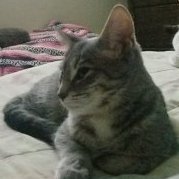
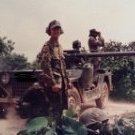
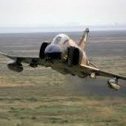
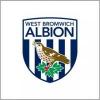

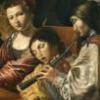
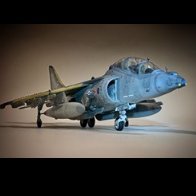


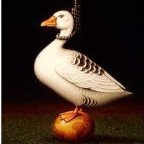
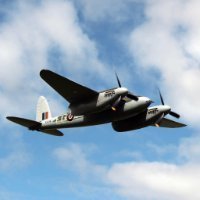
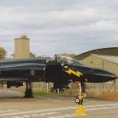
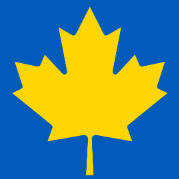




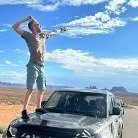
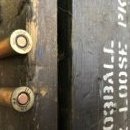
Wedge-TailedEaglePortraitRaptorDomains.thumb.jpg.41a306d3445a68f0f2df773e01776ea6.jpg)